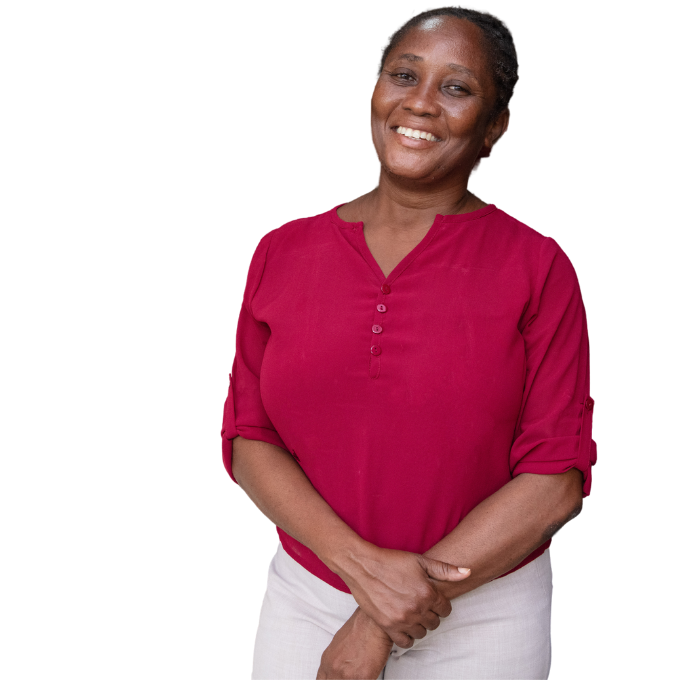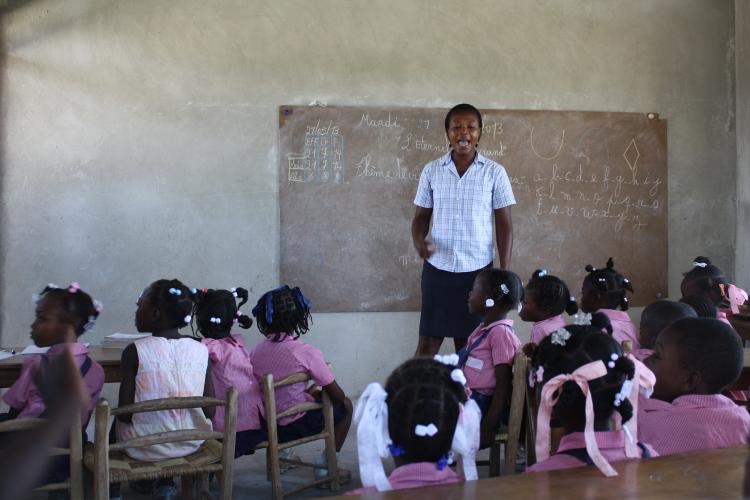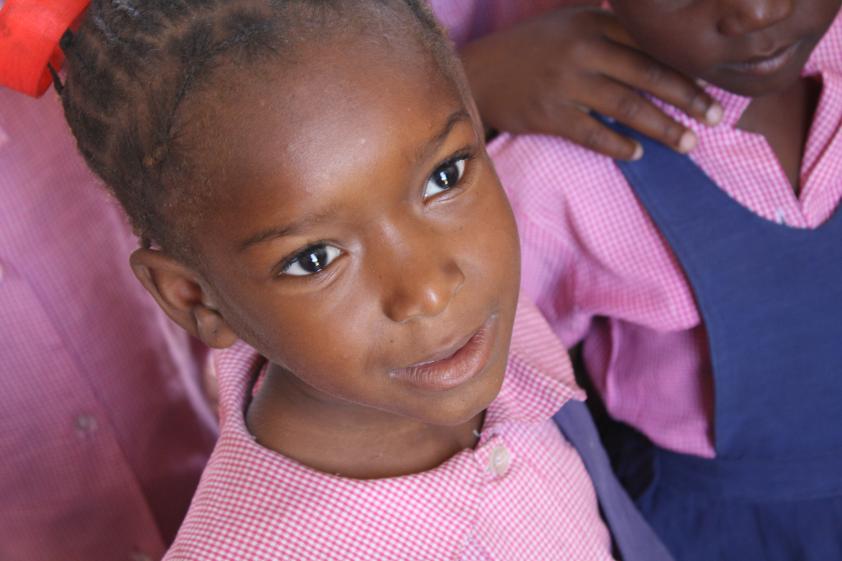“We never give up on our patients. We are proud of our mission, which is to serve the most vulnerable.”
Your donation can help Dr. Clermont and our entire staff care for more patients than ever before.


The jeep bounced up and down on a one-lane dirt road that many people would mistake for a dried riverbed, it was so uneven and rutted. As SBH’s Communications Intern I was visiting the hub of our operations in Fond des Blancs and taking a day to tour schools. But we were several kilometers from any school or town when the driver stopped next to a teenage girl. She was walking in a neat school uniform, solid and checked navy in the heavy sun, carrying a book bag. The driver offered her a ride in the SBH’s vehicle, and she climbed in.
The driver had recognized her school uniform—each school has a distinctive set of colors—and realized she was heading to Fond des Blancs, the same place we were. There was a stream of Kreyol and Jonas, my translator, turned to me surprised; “she’s already been walking for an hour!” By the end of the trip, I was astounded; it took more than twenty minutes by jeep to get to Fond des Blancs after we picked her up. This eighth-grader did that walk of more than two hours twice a day, every school day, in the heat or the mud, to get her education.
There are a lot of obstacles to getting and providing education in Haiti, but one of the main ones is that there are very few public schools, and in the Fond des Blancs area, no free schools at all. Every Haitian student must pay to attend each year. It only costs $200 U.S. per year to send a child to school. But in a country where over 6 million people - roughly 60% of the whole population – live on less than a dollar a day, $200 is out of reach for many families. Besides the cost, there are issues of transportation; children rarely go to the school that is closest to them, but the most affordable one they can walk to. Uniforms and book fees are typically required on top of tuition, and some students do not have the resources left for the good meals that would allow them to focus on their schoolwork.
But many Haitian children are committed to school. Aldine, 12, and Chaldeline, 18, sit smiling in the back of the sixth-grade class together in Cha Cha, at a school HEI/SBH built and continues to fund with the support of IC-Haiti in Newburyport, MA. “I want to be something when I grow up, a doctor or nurse,” says Chaldeline. Without this, says Michelet Mascary, SBH’s Education and Community Development Coordinator, children grow up to take very low-skill, low-paying jobs in sectors like agriculture or domestic service, and continue in extreme poverty. “I usually say to kids, ‘you have only one opportunity in life, and that’s education.’”

Education is crucial if Haitians are to remedy that poverty. Sending children to school is just one of our many efforts, but it’s one of the most important in the fight to keep communities healthy. We support several hundred school children by paying their school fees, with the goal of getting as many children as possible funded all the way through university.
However, there are thousands of children who still need help, and there is a lot more to be done. There used to be enough money for books for many schools, but now the available money only stretches to cover students’ tuition. “I want to hire better teachers, and send the current ones to training,” says Jeane Alson, the principal of one of the primary schools in the Fond des Blancs area, told me. “The books are falling apart and there is nothing for the children to do during break because we have no balls for football games,” Alson explains, “but fixing this takes money.” He told me children sometimes used an orange where they had no balls. “For now, we are dealing with what we have,” says Michelet Mascary, SBH’s Education and Community Development Coordinator, “but there are still improvements to be made. Right now, we can fund only a small portion of the students who need help getting an education.”
Your donation can help Dr. Clermont and our entire staff care for more patients than ever before.
